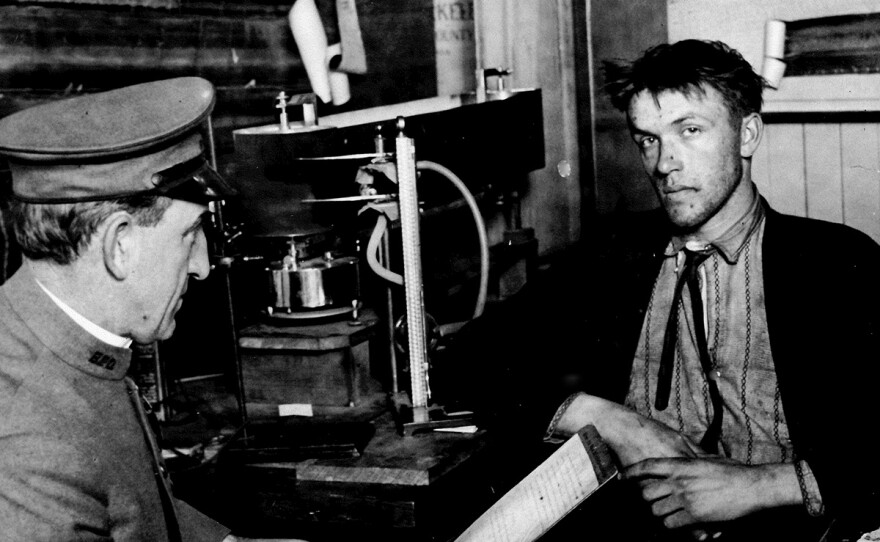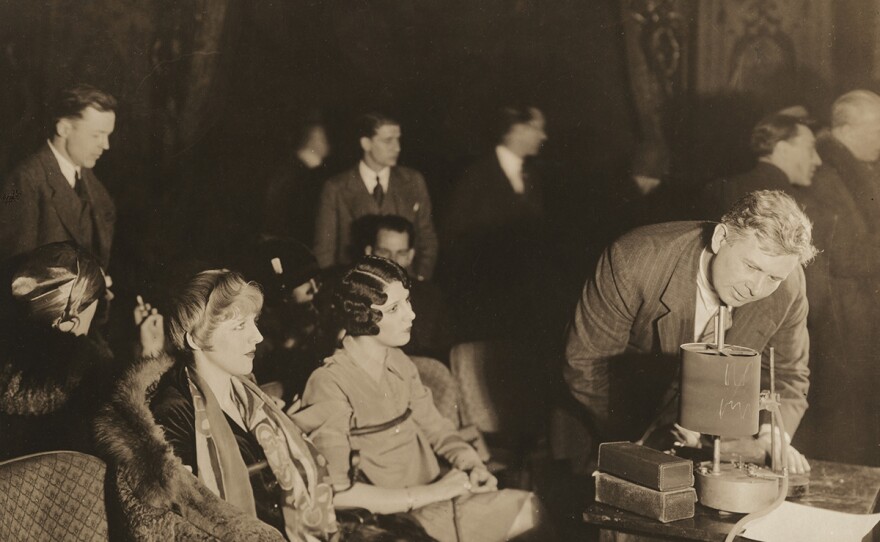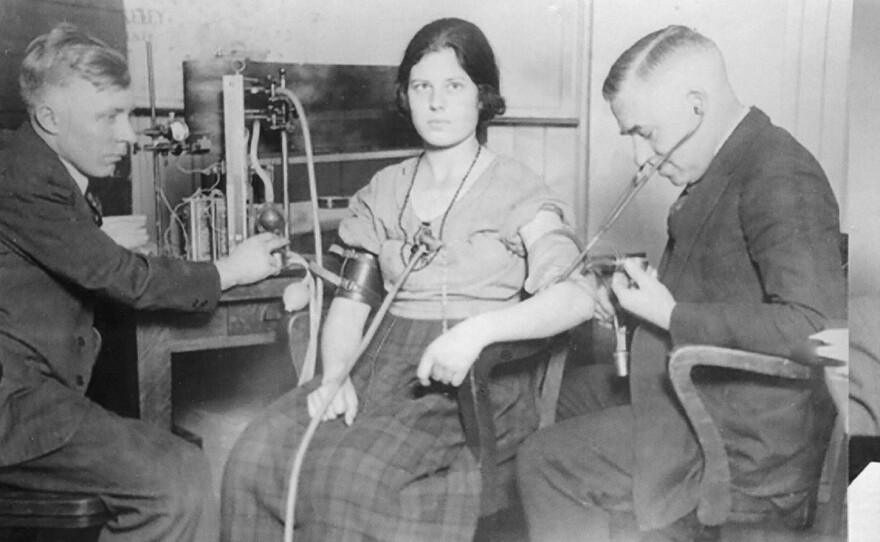Tuesday, Feb. 20, 2024 at 11 p.m. on KPBS TV / Stream now with the PBS App
In the first decades of the 20th century, when life was being transformed by scientific innovations, researchers made a thrilling new claim: they could tell whether someone was lying by using a machine. Popularly known as the “lie detector,” the device transformed police work, seized headlines and was extolled in movies, TV and comics as an infallible crime-fighting tool.
Husbands and wives tested each other’s fidelity. Corporations routinely tested employees’ honesty and government workers were tested for loyalty and “morals.” But the promise of the polygraph turned dark, and the lie detector too often became an apparatus of fear and intimidation. AMERICAN EXPERIENCE “The Lie Detector” is a tale of good intentions, twisted morals and unintended consequences.
Today, the lie detector is little more than a curiosity to the general public. But for decades, the device was an inescapable feature of American life, used by police, the government, the CIA and the FBI, and more than half the retail businesses in the country. Designed to ferret out Communists, cheats, criminals and homosexuals, it was used on millions of ordinary people, changing tens of thousands of lives forever. Yet in most of these circumstances, the results were little better than guesswork. Never fully accepted in any other country, the lie detector remains a uniquely American phenomenon.
In the first decades of the 20th century, three men — police officer John Larson, psychologist William Marston and Larson’s assistant Leonarde Keeler — claimed the polygraph could detect a lie by monitoring the physiological responses of their subjects.

In 1921, Larson — a rookie cop in Berkeley, California, and the only police officer in the country with a PhD — pursued a vision of scientific, clean policing. Determined to find a more humane alternative to the “third degree,” Larson created a device that took continuous blood pressure and respiration readings.
When he solved a series of thefts with the device, reporters celebrated his machine as the way of the future. But Larson later realized his suspect had only confessed to the crime to avoid having her deepest secret — a history of sexual abuse — revealed. Disillusioned, Larson left Berkeley and quit the police.
The lie detector had other champions, including William Marston, inventor of the “Marston Deception Test.” Although this was simply a blood pressure cuff and useless as a lie detector, Marston promoted it as almost infallible. But in a sensational murder case in 1923, an appeals court declared the lie detector inadmissible. With few exceptions, that has been the case ever since.

Marston persevered and within a few years was using his lie detector to compare the emotional responses of blondes vs. brunettes and redheads. Marston’s hair color tests were a joke in the scientific community, but they caught the eye of Carl Laemmle, head of Universal Studios. By 1929, Marston was in Hollywood, tracking the emotional response of test audiences to upcoming releases.
Over the years, Marston would use his lie detector for everything from advertising to marriage therapy — always one step ahead of his creditors, and sometimes the law. He finally hit it big when he created Wonder Woman, who fought evil with what became known as “The Lasso of Truth.” He died in 1946 a rich and famous man widely hailed as the inventor of the lie detector.
But it was Leonarde Keeler, an assistant to John Larson, who made the device a common feature of American life. While Larson envisioned the lie detector as a humane interrogation technique, in Keeler’s hands it became a psychological extension of the brutal third degree and the polygraph spread to police departments across the country.
During the Cold War, Keeler was summoned to the government’s vast A-bomb plant in Oak Ridge, Tennessee, where he was charged with ferreting out leaks and spies. Soon the national security sector, the military and businesses were using the device to screen out perceived threats. The intimidation factor of the machine was, and remains, a key to the lie detector’s power. Richard Nixon later summed up its usefulness: “I don’t know anything about polygraphs, but I know they’ll scare the hell out of people.”
The lie detector’s spread went unchecked until 1988. When President Reagan ordered a dramatic expansion of government testing. Congress responded with the Polygraph Protection Act, which effectively banned the lie detector from the business world. Overnight, use plummeted by 90 percent. Still used today in police investigations, plea bargaining and throughout the national security sector, the lie detector remains as controversial as ever.

Watch On Your Schedule:
AMERICAN EXPERIENCE “The Lie Detector” is available to stream with the PBS App. Extend your viewing window with KPBS Passport, a benefit for members supporting KPBS at $60 or more yearly, using your computer, smartphone, tablet, Roku, AppleTV, Amazon Fire or Chromecast. Learn how to activate your benefit now.
The film will also be available for streaming with closed captioning in English and Spanish.
Credits: Written and Directed by Rob Rapley. Produced by Emily Harrold. Narrated by Andre Braugher. Edited by Omry Maoz. AMERICAN EXPERIENCE is a production of GBH Boston. Executive Producer: Cameo George.






